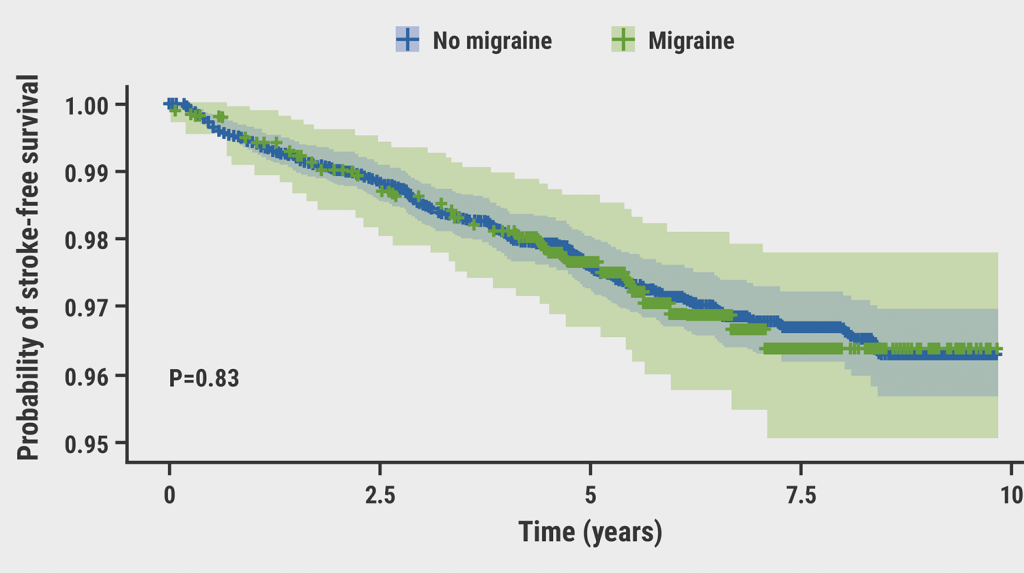Real-world data from the PREDICT trial demonstrated that long-term onabotulinumtoxinA treatment improved health-related quality of life of patients with chronic migraine. In addition, onabotulinumtoxinA treatment reduced headache days, with high physician and patient satisfaction [1].
Chronic migraine can affect health-related quality of life and daily functioning, resulting in social and economic burden.
PREDICT was a 2-year, multicentre, prospective, observational study in Canadian adults who were naïve to botulinum toxins for chronic migraine. The aim was to assess real-world long-term effects of onabotulinumtoxinA on quality of life in this patient population. OnabotulinumtoxinA treatment was recommended for injection every 12 weeks, up to 7 treatment cycles.
A total of 184 participants with an average age of 45 years, predominantly female (84.8%), and mostly Caucasian (94.6%) received ≥1 treatment with onabotulinumtoxinA.
At baseline, patients reported 20.9 headache days per month, which decreased over time by:
- -3.5 days at treatment 1;
- -6.5 days at treatment 4; and
- -6.3 days at treatment 7 (all timepoints vs baseline; P<0.0001).
Moderate-to-severe headache days also decreased from 12.9 days per month at baseline by:
- -3.4 days at treatment 1,
- -5.6 days at treatment 4, and
- -4.7 days at treatment 7 (all timepoints vs baseline; P<0.0001).
Significant increases in Migraine-Specific Quality of Life (MSQ) from baseline to treatment 4 (restrictive: 21.5, preventive: 19.5, emotional: 22.9) and at the final visit (restrictive: 21.3, preventive: 19.2, emotional: 27.4) were observed versus baseline. These differences exceeded the threshold for minimal clinically important differences (all P<0.0001).
With respect to safety, 77 patients (41.8%) reported 168 treatment-emergent adverse events (AEs). Of these, 38 treatment-emergent AEs in 22 patients (12.0%) were considered treatment-related. Only 4 patients (2.2%) reported 6 serious treatment-emergent AEs; none were considered treatment-related. No new safety signals were identified.
This real-world data demonstrated that long-term onabotulinumtoxinA treatment for chronic migraine improved health-related quality of life. In addition, onabotulinumtoxinA treatment reduced headache days, with high physician and patient satisfaction.
- Boudreau G. OnabotulintoxinA treatment improved health-related quality of life in adults with chronic migraine: results from a prospective, observational study (PREDICT). MTIS Virtual Symposium 2020, abstract MTV20-DP-077.
Posted on
Previous Article
« Sustained shift in migraine status using galcanezumab Next Article
Fremanezumab effective in patients with migraine and comorbid depression »
« Sustained shift in migraine status using galcanezumab Next Article
Fremanezumab effective in patients with migraine and comorbid depression »
Table of Contents: MTIS 2020
Featured articles
Contents
Improvement of migraine using CGRP mAbs in a real-world setting
Similar treatment needs for high-frequency episodic and low-frequency chronic migraine
Nitroglycerin-induced cluster headache attacks characterised comprehensively
Remote electrical neuromodulation useful for adolescents with migraine
Concomitant preventive medication has no impact on efficacy of ubrogepant
No new cardiovascular safety concerns with long-term use of lasmiditan
Less medication use and fewer doctor visits with galcanezumab in treatment-resistant migraine
Real-world evidence reveals physicians’ perception of erenumab
Early initiation of lasmiditan improves migraine outcomes
Fremanezumab effective in patients with migraine and comorbid depression
Long-term onabotulinumtoxinA improves quality of life in migraine
Sustained shift in migraine status using galcanezumab
Long-term efficacy and safety of fremanezumab in treatment-resistant migraine
Related Articles
July 30, 2019
Lasmiditan: rapid onset of efficacy in acute migraine

November 8, 2021
Migraine may not be a risk factor for stroke
© 2024 Medicom Medical Publishers. All rights reserved. Terms and Conditions | Privacy Policy
HEAD OFFICE
Laarderhoogtweg 25
1101 EB Amsterdam
The Netherlands
T: +31 85 4012 560
E: publishers@medicom-publishers.com

